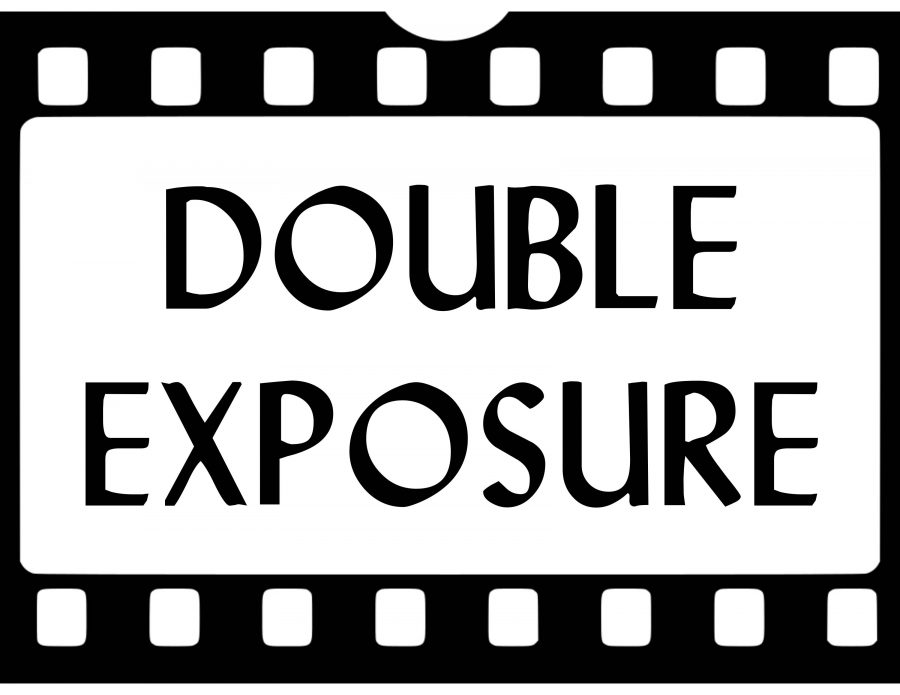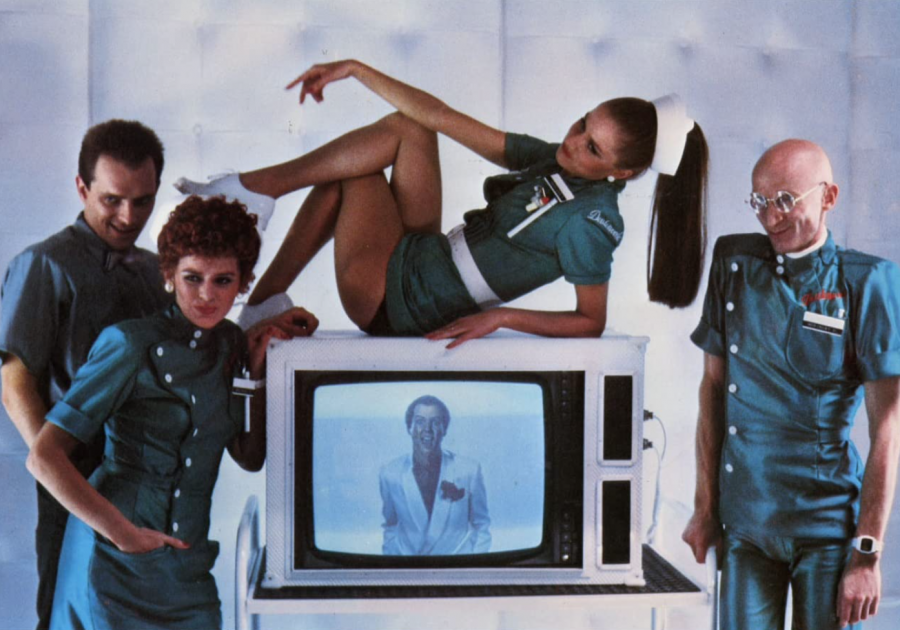Double Exposure: “Shock Treatment” (1981)
May 3, 2021

“Shock Treatment” contains no shock treatment whatsoever.
What this wonderfully bizarre musical offers instead is an unconventional tale of fame, corruption and relationships. With its zany characters and barely-there plot, it’s best experienced with your expectations left at the door.
Written, directed and composed by filmmaker Richard O’Brien, “Shock Treatment” consists of approximately 90% spectacle and 10% storyline, the latter of which is summed up by its opening narration:
“Once upon a time, in a town not far from yours, there lived a real fast guy. His life was fast, his friends were fast, even his food was fast — but he was still not satisfied. He wanted to share his fast philosophy with someone else: a beautiful girl. Trouble was, she was in the arms of another man.”
The narrator describes the scheming fast food mogul Farley Flavors (Cliff DeYoung), who presides over the saccharinely all-American town of Denton: where reality television rules all and the once-fruitful union of wholesome Brad (also played by DeYoung) and Janet (Jessica Harper) has turned mundane. Little does the couple know, however, that Farley has taken an interest in Janet.
The film kicks off with Brad and Janet congregating with an audience for a taping of the gaudy game show “Marriage Maze,” where they’re soon called onstage as contestants in need of marital help.
It’s not long before Brad is promptly framed as mentally unstable and ushered away to solitary confinement to receive unnecessary medical attention from the eccentric neuro-specialists Cosmo and Nation McKinley (O’Brien and Patricia Quinn). With Brad out of the picture, Janet is gradually transformed into the town’s newest starlet.
Will this newfound fame go to her head? Will Farley win her affection? Will she forget about Brad for good? You’ll have to watch and see.
Just don’t feel bad if you have no idea what’s going on. The disjointed narrative switches gears at a rapid pace, quickly leading you to realize that any attempts to follow along will prove futile. On top of that, the cast’s one-dimensional performances might give the impression that they aren’t taking the premise seriously. Indeed, they aren’t — therefore you need not either.
Throughout her career, Harper has portrayed characters of significantly greater substance than she does here. No stranger to cult classics, she previously starred in the flamboyant rock opera “Phantom of the Paradise” (1974) and avant-garde horror flick “Suspiria” (1977).
“Shock Treatment”’s catchy soundtrack features everything from upbeat showtunes (“Look What I Did To My Id”) to rock numbers (“Farley’s Song”) with a splash of punk thrown in for good measure (“Breaking Out”).
A standout track is the brooding “In My Own Way,” which Harper delivers with poignant emotion. Like a handful of other songs in the film, its instrumentation and moodiness hints ever-so-slightly at the era’s emerging new wave sound. With lyrics that read like a love letter describing a fractured romance, the song stands on its own even without the context of the musical.
The “Shock Treatment” cast’s occasionally-cardboard delivery only serves to support O’Brien’s lampooning of superficial suburban ideals (“Denton, U.S.A.” and Janet’s father’s conservative anthem, “Thank God I’m a Man”) with results that are hilariously tongue-in-cheek. The phoniness is furthered by the fact that the entire production is visibly contained within a single sound stage’s walls, presumably as a byproduct of the film’s limited resources.
It’s worth noting that “Shock Treatment” is loosely (and I mean loosely) tied to O’Brien’s 1975 musical “The Rocky Horror Picture Show.” Upon counting their similarities, you’ll find that the connections are so few and far between that they amount to a total of two aspects:
- The return of Brad, Janet and a couple of inconsequential side characters.
- The setting of Denton.
That’s it.
It’s been widely documented that O’Brien created “Shock Treatment” as an attempt to recapture the midnight movie magic that made “The Rocky Horror Picture Show” a fan favorite; but such things can’t be forced. In this pseudo-sequel, familiar faces return as different characters — and familiar characters return with different faces.
Ultimately, “Shock Treatment”’s humility is what allows it to bypass the dreaded “so-bad-it’s-good” fate that similar low-budget endeavors often meet (I’m looking at you, “Sgt. Pepper’s Lonely Hearts Club Band”).
It’s the type of thing you might watch with a fever before waking up the next morning and wondering if it was all a dream. If you enjoy ‘80s music, campy characters and vague medical themes, it may very well be the film for you.
I love “Shock Treatment.” But I’ve never watched it without having some form of cocktail close at hand — and I think I’ll keep it that way.
“Shock Treatment” can be viewed for free on YouTube.







